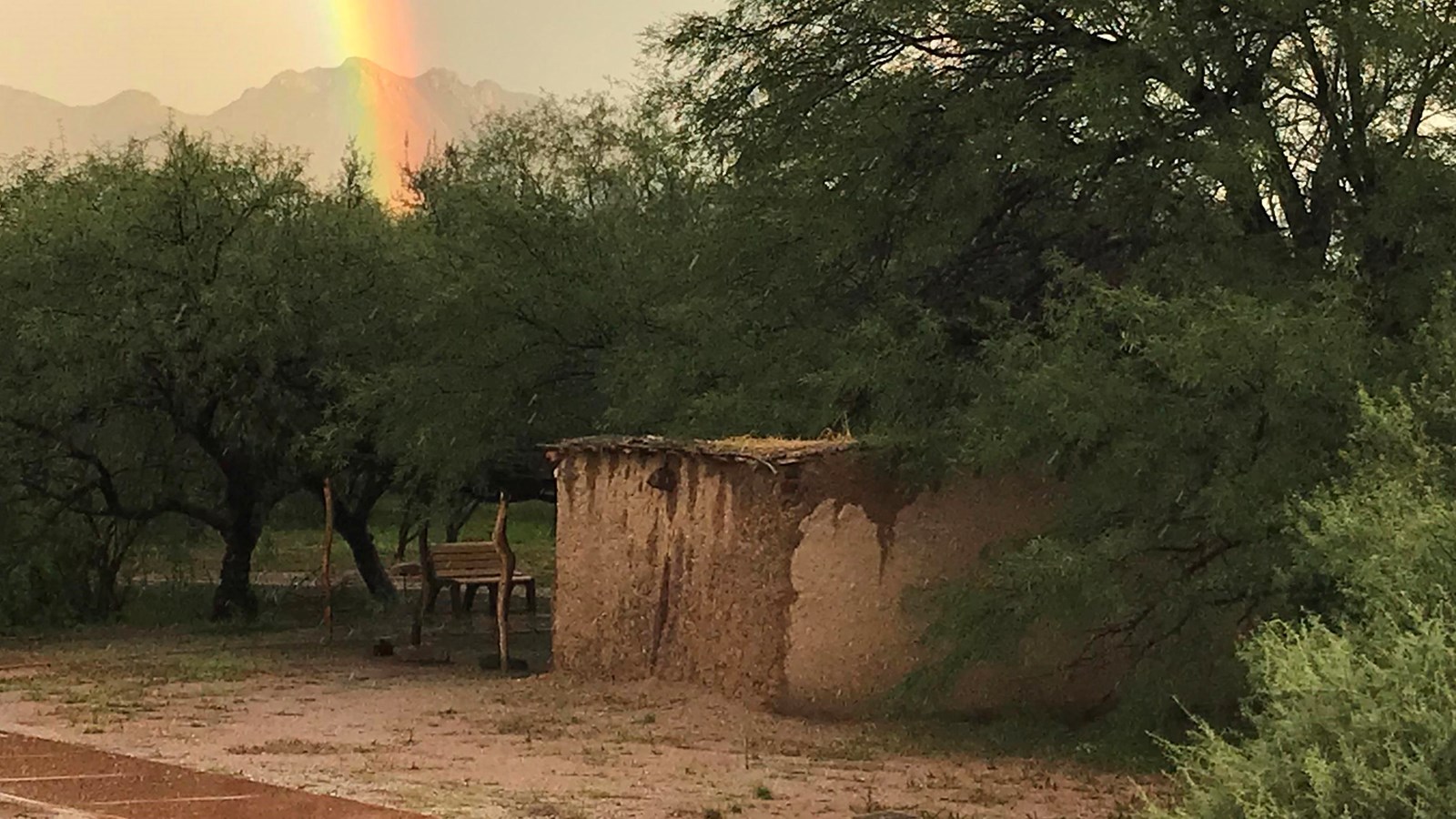Last updated: October 10, 2024
Place
Melhok Ki (ocotillo and mud house)

NPS Photo
Benches/Seating, Scenic View/Photo Spot, Wheelchair Accessible
The O'odham word for house is ki (“kee”). Melhok (“MOO-ro”) is the spiky plant known in Spanish and English as ocotillo. Before the arrival of adobe construction from Spain, the O’odham built rounded homes using mud applied over a wood and brush framework. When rain washed away some of the mud, a new coating was always close at hand. Over time, the O’odham adopted the square rooms favored by the Spanish.
The home would also include a wa:ato (“WAH-ah-toe”), or mesquite ramada, and a brush enclosure for cooking. While the inside of the ki provided shelter on cold nights, many activities in the home took place under or around the wa:ato.
Although many mission residents lived in the Spanish-style adobe rooms around the plaza in front of the church, some may have continued to live in traditional homes.
The O’odham still build and use structures like this, made of mesquite timbers, ocotillo sticks, saguaro ribs, and mud. This one was built in 1997 by O’odham from the San Xavier community using traditional hand tools. When completed, it was dedicated by them to San Francisco Xavier, Father Kino’s patron saint.
